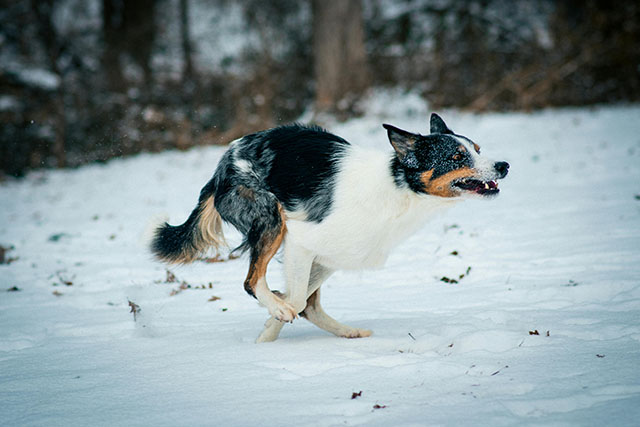Cushing’s disease in dogs is fairly common, especially when it comes to older pets. If diagnosed and managed on time, there are ways to help keep your pet comfortable and happy. However sadly, sometimes it might be time to think about other options.
In this article, we’ll briefly explain the different types of Cushing’s disease in dogs and the answers to frequently asked questions regarding its treatment and prognosis.
Disclaimer: Please refer to the information in this article as a guide only. If you want specific information tailored to your pet’s condition, contact your veterinarian.
What are the different types of Cushing’s disease?
To understand what’s going on in Cushing’s disease, let’s briefly take a look at the different types. This will help explain some of the answers to the questions later on.
A dog with Cushing’s disease has too much of a hormone called ‘cortisol’ which could be due to:
- An Adrenal Gland tumor- a tumor involving the cells that produce cortisol resulting in too much being released – in 15% of cases (source).
- A Pituitary Gland tumor – a tumor in the special part of the brain that signals to the adrenal gland to release cortisol can cause it to be secreted from the adrenal gland even when it’s not needed – 85% of cases (source).
- Medication – when drugs containing cortisol are given over a more extended period, or in too high amounts.
No matter the root cause of why a dog has excess cortisol production, the symptoms are generally the same and include skin problems, poor hair coat condition, and increased hunger and thirst.
What are the final stages of Cushing’s disease in dogs?
When it comes to Cushing’s disease in dogs, it’s difficult to define the final stages as it depends on a range of factors, such as whether your pet’s symptoms are caused by a tumor or medication, and your pet’s general condition.
When considering euthanizing your pet, the main thing to consider is their quality of life.
The HHHHHMM Scale is a resource that can be used to help estimate your pet’s quality of life and includes (source):
- Hurt – how much pain is your pet in?
- Hunger – how does your pet’s condition affect their possibility to eat?
- Hydration – how does your pet’s condition affect their possibility to eat?
- Hygiene – how does your pet’s condition affect their hygiene?
- Happiness – does your pet react to things around them?
- Mobility – is your pet able to move around and enjoy or participate in exercise?
- Does your pet have more good days than bad?
A way to estimate your pet’s quality of life is to think about the points above and grade them from 0 to 10.
How long can a senior dog live with Cushing’s disease?
If diagnosed on time, and managed appropriately, dogs can live happy lives, and according to Dr. Jeff Grognet written in this article by the American Kennel Club ‘most die of unrelated causes brought on by aging’.
However, in the case of a tumor that has grown too large or spread to other areas of the body then a dog’s lifespan can be seriously affected.
We’ve listed some of the other factors that can affect how long a senior dog can live with Cushing’s below:
- Other health conditions.
- Their weight.
- Their lifestyle.
You can read more about how to help your dog be as happy and healthy as possible in our article How to take care of a dog for their good health: a comprehensive guide, the benefits of a comprehensive dental care plan for Dogs and Flea and Tick Prevention Tips – recommendations for dog owners.
What happens if you don’t treat a dog with Cushing’s?
If you don’t treat a dog with Cushing’s disease, then their symptoms are likely to increase in severity as the disease progresses and have a negative impact on your pet’s quality of life.
Diagnosis, treatment, and management of conditions in the early stages of disease in pets, is always preferable to leaving it too late. When things are spotted early on, the possibility of treating or managing a condition is usually much more favorable.
Is Cushing’s in a dog terminal?
Cushing’s disease is not usually considered a terminal disease, however, it largely depends on:
- At which stage it was diagnosed.
- Your dog’s age.
- Whether your dog has any other health conditions.
- Whether your dog is responsive to treatment.
If Cushing’s disease is diagnosed early on, then the chances that treatment will help your dog feel more comfortable are higher.
According to the MSD Veterinary Manual, dogs who have a tumor in their pituitary gland can live for around 2 years regardless of the therapy, which increases to 2-5 years if they have successful radiation treatment. Following successful surgery for dogs with adrenal gland tumors, the prognosis is 8 months (source).
What are the signs of worsening Cushing’s disease in dogs?
Since no two dogs are the same, it’s difficult to generalize about signs of worsening Cushing’s disease in dogs. The main thing is to consider how the changes in your pet are affecting their quality of life.
It depends on whether it’s caused by a tumor or medication. Examples could include dramatic changes in drinking habits and urination, and in some cases, neurological problems.
It’s best to contact your veterinarian to get advice regarding your pet’s condition and to ensure that you can help them feel as comfortable as possible.
How do you make a dog comfortable with Cushing’s disease?
The type of Cushing’s disease affects how you and your veterinarian can help your dog feel comfortable and can include (source):
- Pituitary gland tumor – medication, regular check-ups with a veterinarian, and possibly radiation therapy (source)
- Adrenal Gland tumor – medication, regular check-ups with a veterinarian.
- Medication-related – gradual removal or change in the usage of steroid-containing medication by a veterinarian.
The best way to help keep your pet as comfortable as possible is to always follow the advice from your veterinarian and seek advice as soon as possible if you think there could be something wrong with your pet.
Conclusion
Caring for a dog with a health condition such as Cushing’s disease can be complicated, but we hope after reading this article, you have more information about how best to help them live as comfortably as possible.

Charlotte qualified as a veterinarian in 2023 and has been working as a writer for several years helping pet parents understand how to help their pets live happy healthy lives whilst pursuing her interests in wildlife conservation.
She enjoys traveling and has undertaken positions in Belgium, Spain, Austria, Germany, and the Galapagos and has a 15-year-old rescue dog called Chiki.





